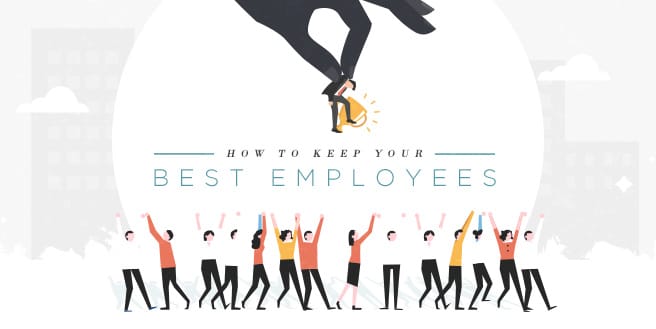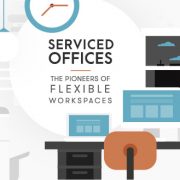Keeping Your Best Employees with Catalysts and Nourishers
Admittedly, it’s hard to find good help amidst a sea of people and when we find them, we want to keep them around for as long as we could.
And though people leave their jobs for several reasons that are sometimes beyond the control of their employers, there’s no denying that leadership can heavily affect the job satisfaction one individual perceives. Those who feel unappreciated or unrecognized for their efforts are more likely to exit. While those who suffer from office politics or were unfortunate enough to find self-serving managers will look somewhere else for a job.
Truthfully, they would begin searching for a new home to go to under the radar, and as they go through several interviews, they’ll start to realize just how undervalued they have become. There’s a good chance that they’ll start looking for a different employer if their current one isn’t offering them opportunities for skill development and fair compensation.
But it’s possible for us to curate systems that your talented workforce deserves.
Catalyst and Nourishment Factors
Director of Research at Harvard Business School Teresa Amabile, together with independent researcher and writer Steven Kramer said in their book – The Progress Principle: Using Small Wins to Ignite Joy, Engagement and Creativity at Work – that there are two certain factors that aid in keeping employees or members of the team engaged, the Catalyst and Nourishment factors
Defined as events and structures that help people make progress, catalyst factors include providing clear goals for the task at hand and giving people enough resources to accomplish them. Nourishment factors, on the other hand, means supporting their inner work lives and usually includes getting to know them better, showing respect as well as offering emotional support.
One real life example of this is Airbnb’s company culture. Their system is pretty simple, they consider the needs of their team members in all aspects of their work environment. They focused on creating a welcoming environment which resulted to a positive impact to their business.
Their leaders recognize the need of development in their culture as the company grows. And in the effort of ensuring that each member is supported, they have appointed a Global Head of Employee Experience whose task is to make sure that everyone’s needs are met.
Your workforce needs nourishment and catalysts in order for them to be successful. Employees who are lucky enough to be part of a supportive and engaging environment are most likely to stay with their company. By giving them the feeling of accomplishment and allowing them room to make progress, they find more meaning and value in their work.
Governing Employees with Catalysts and Nourishers
Amabile further discusses that catalyst and nourishers should work together in providing workers an environment in which they can both thrive and remain fully engaged in their tasks at the same time.
And the first step in leading with catalysts is by setting clear goals that gives everyone direction. Whenever a big project comes in, call for a meeting and set out short as well as long term objectives that could hold them accountable for their progress.
Give them the chance to speak up and ask questions. By doing so, each member will leave with a clear idea of what will be the end results of their efforts.
Once you have a set clear plan, give them enough leeway to do their assigned tasks in that works well for them. Build autonomy within the workplace and make reaching the set objective your main goal.
Having the freedom to do things their way is what attracts majority of this generation’s young professionals. Some of the most talented and creative people tend to stray away from structured domains. One real life proof of this is the growing popularity of the coworking movement.
More and more teams and even, individuals are opting for these shared offices in exchange of having the liberty of working whenever, wherever and however they want to. Unlike in conventional workplaces, coworking gives members full control of their work day, allowing them to maximize their work efficiency.
So don’t be afraid of the unknown. Don’t stifle creativity and who knows? That one person who does things differently than most could just produce excellent output.
Nourish your team by instilling respect and support among one another.
Lend them an ear whenever they have a concern and even if you aren’t exactly on the same page as them, consider what they have to say. The issues they are experiencing may be affecting other members as well. Make your working environment better by hearing them out.
Make them feel good by giving encouragement and recognizing their accomplishments – showing them that you are paying attention. The lack of appreciation is one of the major sources of unhappiness in the office so go the extra mile of offering a compliment or even a formal recognition.
Offer emotional support by listening to them. Each and every one of us have our bad days or feel frustrated at times. Hence, it’s important to recognize how an employee’s mood affects the workplace. By giving them enough space to feel better, they’ll know that you see them as an equal.
And lastly, bond with them. Help coworkers trust and appreciate one another by arranging company picnics or company trips. Create opportunities for them socialize and build memories as a team.
Taking the aforementioned factors into consideration aids the management in improving their respective work culture – giving their employees a much better experience within the company.
Sometimes, the smallest and unexpected thing can create a major impact to your people. By going the extra mile to support them, your good employees or your team’s superstar might just stick around.













Leave a Reply
Want to join the discussion?Feel free to contribute!